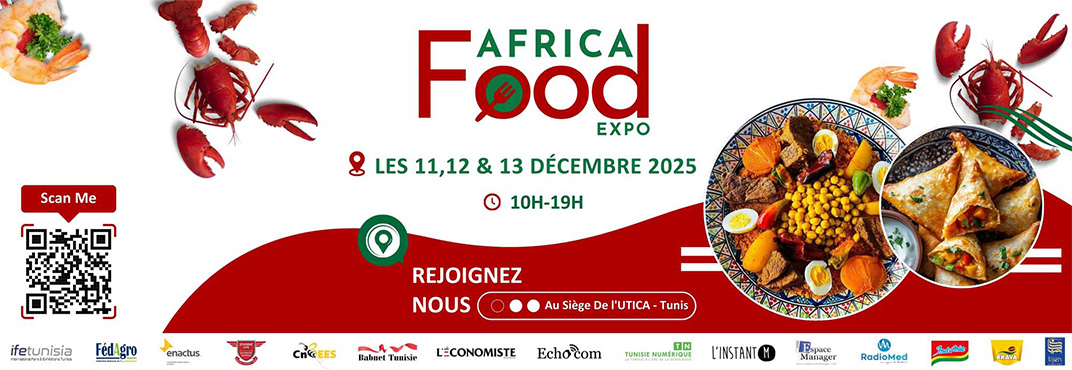Couscous is much more than a simple dish in Tunisia; it's a veritable symbol of the country's culinary culture. It varies from region to region, from fish on the coast to dried meat with fennel in the southeast.
Sweet couscous, less well known outside the Maghreb, offers a unique taste experience. This article explores the different variations of Tunisian couscous, illustrating the richness of its gastronomic heritage.
This selection is not exhaustive, and does not reflect all the specialties involved in preparing couscous.
Couscous with stuffed squid
Stuffed squid couscous is a Tunisian couscous dish "from the sea", which differs from the traditional meat-based version. This recipe features squid stuffed with rice, accompanied by couscous semolina. Tasty and aesthetically appealing, this dish combines tender squid with a filling of aromatic couscous, herbs and spices. It's a meal balanced in protein, fiber and complex carbohydrates, offering both satisfaction and energy.
Couscous with Osban
Tunisian osban is a remarkable dish prepared on the day of Eid al-Adha. It requires considerable effort to prepare, as well as a good quantity of meat and tripe. Lungs, liver and intestines, cleaned and cut into small pieces, enhance the flavor of Tunisian couscous, making it one of Tunisia's favorite dishes. Couscous with osban is more than just a recipe. In the 13th century (and perhaps even earlier), Tunisian women conceived it to demonstrate and enhance their skill in using the various parts of the sacrificial animal without throwing anything away.
Couscous with meslane
Meslane couscous is a Tunisian dish in which a whole sheep is simmered for hours in a spicy sauce. This cooking method results in tender, flavorful meat, while enriching the sauce with deep aromas. Served with couscous semolina and vegetables, this dish is often prepared for special occasions, illustrating Tunisian hospitality and culinary savoir-faire.
Couscous with octopus
Couscous with octopus is a traditional dish from Kerkennah, Tunisia, made with couscous semolina and pieces of octopus cooked in a tomato and spice-based sauce, often accompanied by vegetables. This dish highlights the freshness of seafood and varies according to local recipes. Every year, an octopus festival is held in Kerkennah, celebrating the region's culinary traditions and the octopus as a central ingredient.
Couscous with meat and vegetables
Tunisian couscous with meat and vegetables is a dish composed of pieces of meat, usually lamb, and a variety of vegetables, all flavored with aromatic spices. Served with fluffy couscous semolina, this dish offers a perfect balance of flavors and textures. Easy to prepare, it can be customized according to preference, making it an ideal choice for family meals and special occasions.
Couscous with fish
Tunisian couscous with fish is a traditional dish, especially popular in coastal towns. It is prepared with fresh fish such as red mullet, red mullet, mullet, grouper or burbot, and served with a marqa sauce made with tomatoes, turmeric, chili and various vegetables such as carrots and potatoes. Sfaxien couscous is a unique Sfax variant, characterized by its yellow turmeric sauce, while Monastir uses sardine balls.
Couscous smasem Monastirien
Couscous is a tasty dish of meat, usually lamb or beef, marinated and simmered with spices such as tabil and harissa, and vegetables such as tomatoes and red peppers. Accompanied by light, fluffy couscous, this dish is served with the meat and vegetables arranged on top, often garnished with fried peppers. It's a comforting meal, perfect for family gatherings and special occasions, and reflects the richness of Tunisian cuisine.
Couscous with fennel or farfoucha
Couscous with fennel, or farfoucha, is a dish made with couscous semolina and wild fennel tops. Mainly vegetarian, it can also be prepared with kadid, dried meat. This dish is particularly popular in winter, as it is comforting and rich in vitamins and nutrients. Farfoucha highlights the herbaceous flavors of fennel and is distinguished by its lightness, representing the diversity of Tunisian cuisine.
Mhakek
Mhakek is a non-vegetarian dish from southern Tunisia, particularly popular in the Gabes, Mednine and Tozeur regions. It differs from farfoucha by the addition of dill, fennel tops and onions, as well as atherine (or ouzef) and kadid, a dried meat.
Borzguen
Borzguen is a traditional dish from northwest Tunisia, particularly associated with the Kef and Béja regions. With a sweet note, this dish is typically prepared to celebrate spring, and consists of very fine pieces of mutton. What makes Borzguen unique is the incorporation of nuts into the recipe, including blanched almonds, hazelnuts and pistachios. What's more, the use of honey and cinnamon powder adds a delicious sweetness, elevating the flavors of this typical dish.
Masfouf
Masfouf is a sweet Tunisian dessert, typically eaten during Ramadan, particularly for S'hoor. Considered a sweet version of couscous, it is prepared by moistening couscous semolina with sweetened milk, then mixing with walnuts, raisins, dates or pomegranates. Recipes vary from family to family, and some add extra dried fruit. Often served with a glass of milk or tea, masfouf is a festive, comforting dish that reflects Tunisian culinary traditions.
Couscous with chicken
Tunisian chicken couscous is a tasty and affordable specialty, prepared by frying pieces of chicken with onions, garlic and tomatoes, then seasoned with spices. It includes a variety of vegetables and chickpeas cooked in a broth. Served with couscous semolina, this dish is common at Sunday meals.
- -Eya Rziga









